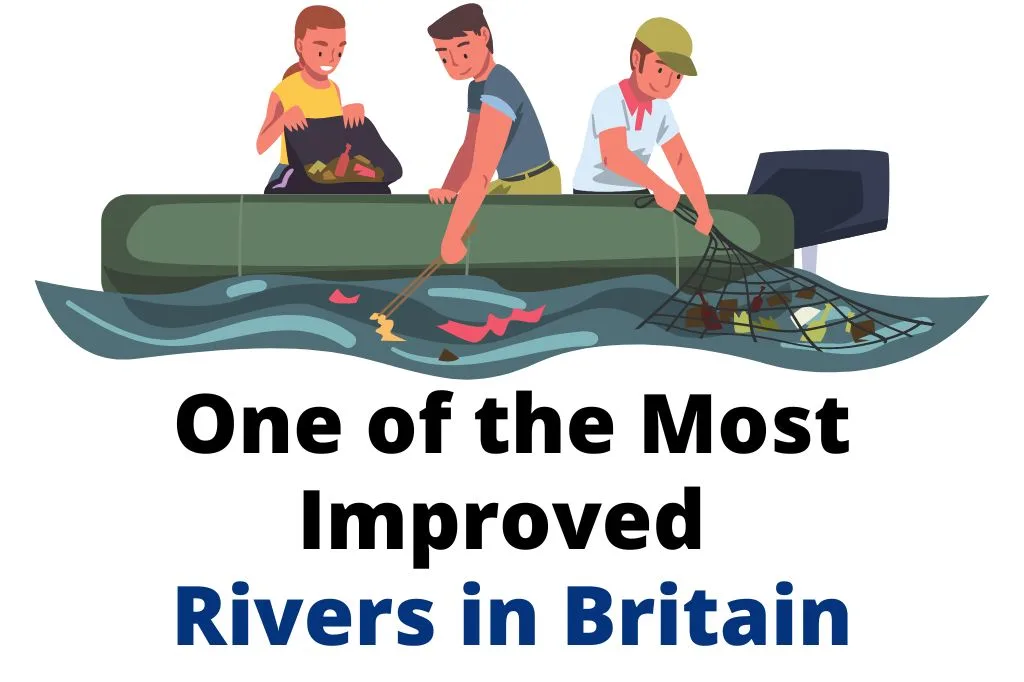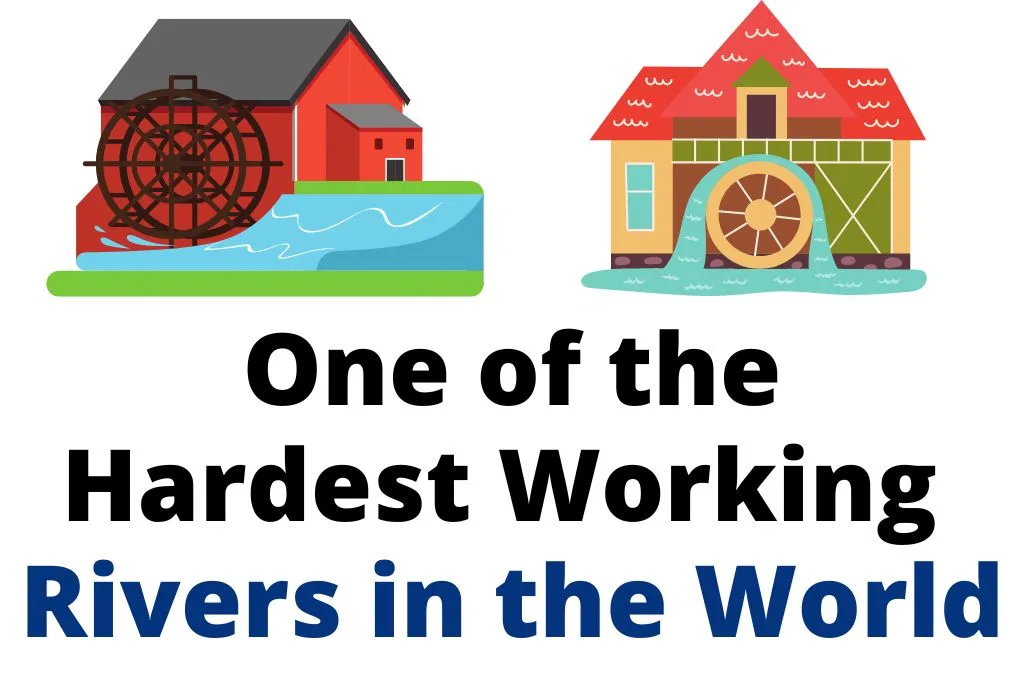The River Wandle is a unique and fascinating river. There were once over fifty watermills on its banks, as well as grand houses and palaces owned by rich merchants and members of the aristocracy. It was also a source of inspiration for artists, and featured in many novels.
This post contains a list of ten interesting facts about the River Wandle.

10 River Wandle Facts
1. The Wandle River is Mentioned in H.G. Wells’ Novel War of the Worlds

The Wandle River is mentioned by HG Wells in War of the Worlds. The quote from the novel is below.
All down the line from there the aspect of the country was gaunt and unfamiliar; Wimbledon particularly had suffered… The Wandle, the Mole, every little stream was a heaped mass of red weed, in appearance between butcher’s meat and pickled cabbage….
War of the Worlds by H G Wells
The Wandle has also been mentioned in other novels, including in the Borrible books by Michael de Larrabeiti. The Borribles are runaway children who live in a tunnel of mud under the Wandle River.
The watermills on the river Wandle were also thought to have been the inspiration for George Elliot’s “The Mill on the Floss” published in 1860, when Elliot lived in Southfields.
2. In 2011 the Wandle was named as one of the 10 most improved rivers in Britain

In 2011 the Environment Agency named the River Wandle as one of the most improved rivers in England and Wales. It was one a polluted industrial waterway, which had been labelled a “sewer” in the 1960s.
Today, after efforts to clean up the Wandle, it is now a haven for wildlife, and a popular spot for tourists. It is also one of the best places in the country for fishing.
The other nine rivers in the list included the River Thames, the River Nar in Norfolk, the River Darent in Kent, the River Taff in south Wales, the River Stour in Worcestershire, the River Stour in Dorset the Mersey Basin, the River Wear in County Durham, and the River Dee which rises in Snowdonia.
3. The River Wandle is Famous for its Brown Trout

In the seventeenth century, the River Wandle was known as a trout stream. At that time there was only brown trout in the river, but in the late 1800s rainbow trout were also introduced to the water.
Large catches of both brown and rainbow trout have been recorded in history, and some kept as trophies. You can still see a rainbow trout that was caught in 1898 on display at the Honeywood Museum in Carshalton.
There are references to trout from the River Wandle in The Compleat Angler by Izaak Walton, such as the one below.
…this Trout looks lovely; it was twenty two inches when it was taken; and the belly of it looked some part of it as yellow as marigold, and part of if was as white as a lily…
This is the Wandle variety of Trout with marbled spots like a Tortoise.
The Compleat Angler by Izaak Walton
4. The Wandle was one of the Hardest Working Rivers in the World

In Victorian times the Wandle was one of the hardest working rivers in the world. The Domesday survey listed 13 different mills on its banks, and local historian Peter McGow discovered 50 watermills through his research.
Most of the watermills on the Wandle were for tobacco and textiles, but there were also mills for processing copper, producing papers, milling corn and making leather. Since the water was so pure it was also ideal for printing industries.
5. William Morris Moved His Textile Company to the Banks of the Wandle

In 1881, William Morris moved his textile design and printing company to the banks of the River Wandle. The Wandle’s pure water was ideal for dying fabrics, and the area provided more space that the factory’s current location in central London.
Since Morris was a strong socialist, he paid his workers higher than average wages and supplied a library for their education. He also build a dormitory for the apprentice boys and ensured they had healthy surroundings to work in.
6. The Editor of the Morning Chronicle Once Lived by the Wandle
Between 1791 and 1821, the editor of the Morning Chronicle, James Perry, lived in a house next to the Wandle River. Perry owned the land around house and the corn mill, which was once the main supplier of flour to London.
Today the original house that James Perry lived in (Wandlebank House) no longer exists. The area that was once the grounds of the house is now Wandle Park in Colliers Wood.
James Perry was a good friend of Admiral Lord Nelson, who visited him many times at his house by the Wandle. According to “The Compleat Angler” by Izaak Walton, Nelson also fished in the River Wandle during his visits.
7. The River Wandle Provided Water for One of the Oldest Breweries in the Country
In the sixteenth century, the Ram Brewery, which became the country’s oldest brewery in continuous operation, set up along the banks of the Wandle. The water from the river was used to cool the vats.
The oldest record that’s been found of beer being brewed at the site was from 1576, when a beer brewer was recorded as working at the pub. Beer continued to be brewed on the site until 2006
8. One of the Most Important Monasteries of the Middle Ages was Built Next to the Wandle

In 1117, Merton Priory was founded on the banks of the Wandle River. The priory went on to become one of the most important and influential monasteries in southern Britain. Thomas Becket, the Archbishop of Canterbury was one its earliest pupils.
In 1437 Henry VI was crowned here, as the priory became increasingly wealthy and influential. In 1538 however, during Henry VIII’s Dissolution of the Monasteries, the priory was handed over to the crown, and mostly destroyed. Today you can still see some of the remains of the original priory walls.
9. During the First World War there was a Military Hospital next to the Wandle
During the First World War, Morden Hall was used as an an auxiliary military hospital and a convalescent home for soldiers. Morden Hall had large grounds next to the river Wandle and provided peaceful surroundings for injured soldiers to convalesce.
After the war, Morden Hall continued to be used as a hospital run by the Salvation Army. Today Morden Hall and its estate is owned by the National Trust.
10. Water Voles Have Been Reintroduced to the Wandle

Water voles were re-introduced to the Wandle river in 2004, after they were driven away from the river in the 1970s by wooden cladding and pollution.
The voles were introduced in Morden Hall Park, Watermeads Nature Reserve, and the Spencer Road Wetlands where the river banks provided an ideal habitat for them.
Since rats are very common along the river it is easy to mistake the two, but water voles have much rounded faces and smaller ears.
Other Facts About the River Wandle
- Is the River Wandle Clean?
- River Graveney – A Tributary of the River Wandle
- How Many Rivers Are in London? (with map)
- The River Wandle is a Rare Chalk Stream
- Why is the River Wandle called Wandle?
Ten River Wandle Facts
Thank you for reading my ten facts about the River Wandle. If you know any more interesting facts about the river, please leave me a comment below!

Sara Hobbs
Friday 2nd of June 2023
I read your facts about the River Wandle after searching for the rivers of London. You clearly have a love and knowledge of the lovely little waterway. Thanks. We live in deepest Worcestershire surrounded by lovely countryside forgetting what is also in London and how we must treasure and preserve it. Sara